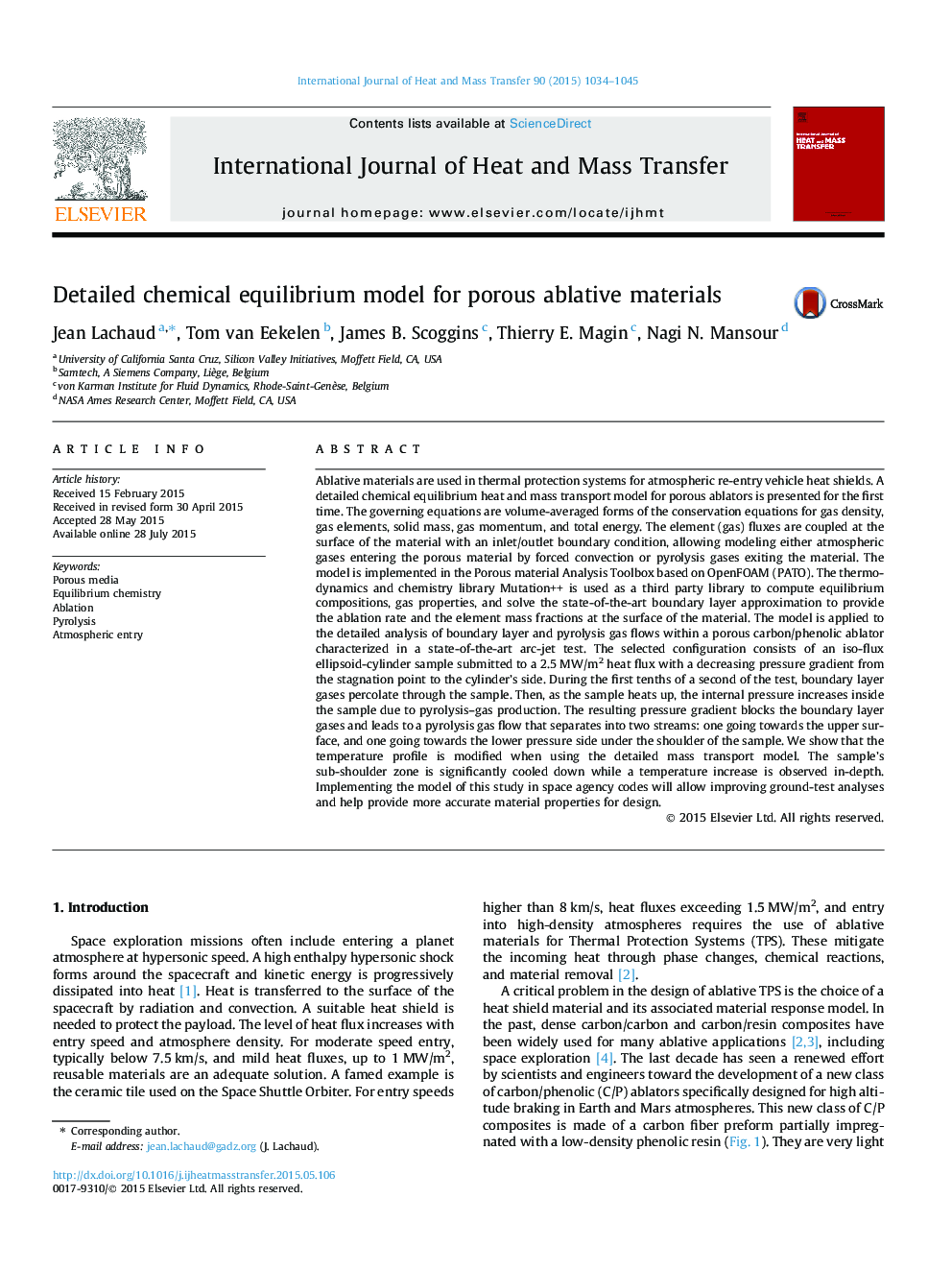| کد مقاله | کد نشریه | سال انتشار | مقاله انگلیسی | نسخه تمام متن |
|---|---|---|---|---|
| 7056573 | 1458052 | 2015 | 12 صفحه PDF | دانلود رایگان |
عنوان انگلیسی مقاله ISI
Detailed chemical equilibrium model for porous ablative materials
ترجمه فارسی عنوان
مدل تعادل شیمیایی دقیق برای مواد متخلخل
دانلود مقاله + سفارش ترجمه
دانلود مقاله ISI انگلیسی
رایگان برای ایرانیان
کلمات کلیدی
رسانه های متخلخل، شیمی تعادل، تخریب پیرولیز، ورودی جوی،
موضوعات مرتبط
مهندسی و علوم پایه
مهندسی شیمی
جریان سیال و فرایندهای انتقال
چکیده انگلیسی
Ablative materials are used in thermal protection systems for atmospheric re-entry vehicle heat shields. A detailed chemical equilibrium heat and mass transport model for porous ablators is presented for the first time. The governing equations are volume-averaged forms of the conservation equations for gas density, gas elements, solid mass, gas momentum, and total energy. The element (gas) fluxes are coupled at the surface of the material with an inlet/outlet boundary condition, allowing modeling either atmospheric gases entering the porous material by forced convection or pyrolysis gases exiting the material. The model is implemented in the Porous material Analysis Toolbox based on OpenFOAM (PATO). The thermodynamics and chemistry library Mutation++ is used as a third party library to compute equilibrium compositions, gas properties, and solve the state-of-the-art boundary layer approximation to provide the ablation rate and the element mass fractions at the surface of the material. The model is applied to the detailed analysis of boundary layer and pyrolysis gas flows within a porous carbon/phenolic ablator characterized in a state-of-the-art arc-jet test. The selected configuration consists of an iso-flux ellipsoid-cylinder sample submitted to a 2.5Â MW/m2 heat flux with a decreasing pressure gradient from the stagnation point to the cylinder's side. During the first tenths of a second of the test, boundary layer gases percolate through the sample. Then, as the sample heats up, the internal pressure increases inside the sample due to pyrolysis-gas production. The resulting pressure gradient blocks the boundary layer gases and leads to a pyrolysis gas flow that separates into two streams: one going towards the upper surface, and one going towards the lower pressure side under the shoulder of the sample. We show that the temperature profile is modified when using the detailed mass transport model. The sample's sub-shoulder zone is significantly cooled down while a temperature increase is observed in-depth. Implementing the model of this study in space agency codes will allow improving ground-test analyses and help provide more accurate material properties for design.
ناشر
Database: Elsevier - ScienceDirect (ساینس دایرکت)
Journal: International Journal of Heat and Mass Transfer - Volume 90, November 2015, Pages 1034-1045
Journal: International Journal of Heat and Mass Transfer - Volume 90, November 2015, Pages 1034-1045
نویسندگان
Jean Lachaud, Tom van Eekelen, James B. Scoggins, Thierry E. Magin, Nagi N. Mansour,
